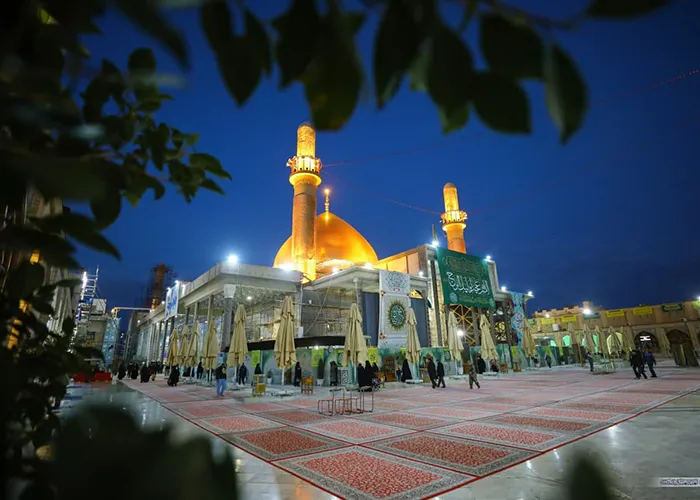Topic of the Week – Volume02 Issue35
The Most Difficult Responsibility of Imam Hasan al-Askari (AS)
Seyed Hashem Moosavi
Introduction
The 8th of Rabi al-Awwal marks the martyrdom anniversary of the eleventh shining star of Imamate and Wilayah, Imam Hasan ibn Ali al-Askari (peace be upon him). An Imamate that occurred during one of the darkest and most oppressive periods in Islamic history, placing a momentous and unparalleled responsibility upon his noble shoulders: preparing the community for the entry into the era of occultation (Ghaybah).
This article explores this formidable responsibility and the wise strategies employed by that Imam pbuh) to secure the future of Shiism.
The Main Challenge
Imam al-Askari (AS) assumed the leadership of the Shi’a under unprecedented circumstances. The Shi’a, for two centuries, had been accustomed to the physical presence and direct access to their Imam. Now, they had to accept a completely new and novel concept: an Imamate that continues, but with an Imam (AS) hidden from view. On the other hand, the tyrannical Abbasid regime kept a close watch on the Imam (AS), suppressing any slightest activity concerning his son and successor. This severe restriction made conveying this concept to the community a tremendous challenge.
The Strategies of Imam al-Askari (AS)
The Imam (AS), with exceptional wisdom and foresight, employed several strategies to prepare the community for this great transition:
- 1. Direct Introduction of the Awaited Guardian (AJ)
The Imam (AS) introduced his son, Imam al-Mahdi (may Allah hasten his reappearance), in a limited manner, only to his most specific and trusted companions. A historical example is individuals like “Ahmad ibn Ishaq al-Qummi,” to whom the Imam (AS) showed his son and said, “After me, this is your Imam.” This action provided ocular proof for a group of companions to testify to the existence of the Twelfth Imam after the Imam’s martyrdom, preventing discord.
- Explaining the Doctrinal Foundations of Occultation
Imam al-Askari (AS), in his words and actions, based on the Quran and Prophetic narrations, explained that occultation and long life of the Imam are divine tradition (Sunnah Ilahiyyah) with numerous historical precedents. These include the occultation of Prophet Yunus (AS) in the belly of the whale, the hidden life of Prophet Ibrahim (AS) after withdrawing from his people, as well as the long lifespans of Prophet Nuh, Idris, Khidr, and Jesus (peace be upon them all). This argument demonstrated that the occultation of Imam Mahdi (may Allah hasten his reappearance) is also possible and consistent with previous divine traditions.
- Strengthening and Expanding the Institution of Deputyship (Wikalah)
The Imam (AS) established an organized and extensive network of trusted deputies (Wukala) across various Islamic lands. These deputies were responsible for collecting religious funds (Khums and Zakat), answering jurisprudential and doctrinal questions, and maintaining the connection between the Imam and the Shi’a. This institution was a practical model and rehearsal for the era of occultation, teaching the Shi’a how to remain connected to the Imamate through his authorized representatives in his absence.
This system later reached its perfection during the Minor Occultation (Ghaybah al-Sughra) through the Four Deputies (al-Nuwwab al-Arba’ah).
- Emphasizing Faith, Patience, and Awaiting (Intizar)
Imam al-Askari (AS) consistently emphasized that the greatest test for the Shi’a would be maintaining faith and patience during the era of occultation. He said that even if they do not see their Imam (AS), he exists and watches over their deeds. This emphasis planted the necessary psychological and spiritual foundations for enduring the difficult period of occultation in the hearts of the believers.
- Warning About Spiritual Orphanhood and the Duty of the Scholars
In this context, a precious narration from Imam Hasan al-Askari (AS) from his noble forefathers (AS) emphasizes the most severe type of orphanhood-being separated from and not recognizing the Imam of one’s time. Citing a tradition from the Prophet Muhammad (SAWA), he said:
«أَشَدُّ مِنْ يُتْمِ الْيَتِيمِ الَّذِي انْقَطَعَ عَنْ أَبِيهِ يُتْمُ يَتِيمٍ انْقَطَعَ عَنْ إِمَامِهِ وَ لَا يَقْدِرُ عَلَى الْوُصُولِ إِلَيْهِ وَ لَا يَدْرِي كَيْفَ حُكْمُهُ فِيمَا يُبْتَلَى بِهِ مِنْ شَرَائِعِ دِينِهِ» [1]
“More severe than the orphanhood of a child separated from his father is the orphanhood of one separated from his Imam, unable to reach him, and not knowing his ruling regarding the religious ordinances he is faced with.”
The Imam (AS) then highlights the pivotal role of sincere scholars and their heavy responsibility:
أَلَا فَمَنْ كَانَ مِنْ شِيعَتِنَا عَالِماً بِعُلُومِنَا وَ هَذَا الْجَاهِلُ بِشَرِيعَتِنَا الْمُنْقَطَعُ عَنْ مُشَاهَدَتِنَا يَتِيمٌ فِي حِجْرِهِ أَلَا فَمَنْ هَدَاهُ وَ أَرْشَدَهُ وَ عَلَّمَهُ شَرِيعَتَنَا كَانَ مَعَنَا فِي الرَّفِيقِ الْأَعْلَى
“Indeed, any ignorant person unaware of our Shariah, deprived of seeing us, is an orphan in the care of our Shi’a scholars. Indeed, whoever guides him, directs him, and teaches him our Shariah will be with us in the highest companionship [al-Rafiq al-A’la].”
This luminous statement clearly outlines the mission of religious scholars during the occultation: to fill the void of direct connection with the Imam by introducing the Imam (AS) and teaching the pure Islamic teachings, so that the community may be saved from spiritual orphanhood.
The Necessity of Connection with the Imam (pbuh)
Given that the true orphan is one separated from his Imam (AS), the importance of connecting with Imam al-Zaman (AJ), striving to know him, and following him becomes ever more apparent. Islamic sources and authentic supplications emphasize the necessity of establishing a spiritual bond with the Imam of the Time (AJ) and maintaining this connection. Praying for his reappearance (Faraj), recognizing his signs, and following the authentic Islamic teachings obtained through his general deputies (qualified jurists) can save us from this spiritual orphanhood and guide us toward righteousness and perfection.
The Consequences and Achievements
The strategic actions of Imam al-Askari (AS) yielded precious fruits:
- Prevention of a Doctrinal Crisis:After the Imam’s martyrdom, although the Shi’a community experienced initial grief and confusion, thanks to the prior introduction of Imam al-Mahdi (AJ) and the existence of the deputy network, it did not collapse and continued the path of Imamate (phut).
- Paving the Way for the Minor Occultation:The community was well-prepared to accept the concept of specific deputyship (al-Niyabah al-Khassah). Therefore, with the beginning of the Minor Occultation, the people turned to the Four Deputies, and this period passed smoothly without major tension.
- Creating an Enduring Model for the Major Occultation:The intellectual, doctrinal, and organizational structure laid down by Imam al-Askari (AS) became a lasting model for the Major Occultation (Ghaybah al-Kubra). Relying on just jurists (Fuqaha) as the general deputies of the Imam, referring to narrations to solve problems, and maintaining the spirit of awaiting the relief (Intizar al-Faraj) all have their roots in his efforts.
Conclusion
The martyrdom of Imam Hasan al-Askari (AS) was not just an endpoint to his blessed life but the beginning of a divine test for the true followers of the school of Ahl al-Bayt (AS). What we know today as the dynamic and living school of Shiism is indebted to the wisdom, sufferings, and planning of that oppressed Imam. Commemorating his memory is the best opportunity to revisit those historical lessons and strengthen our faith and anticipation (Intizar) for the reappearance of the promised saviour, Imam al-Mahdi (AJ).
[1] . Tafsir of Imam Askari (AS) – attributed to Imam Askari (AS) – page 339
editor's pick
news via inbox
Subscribe to the newsletter.




